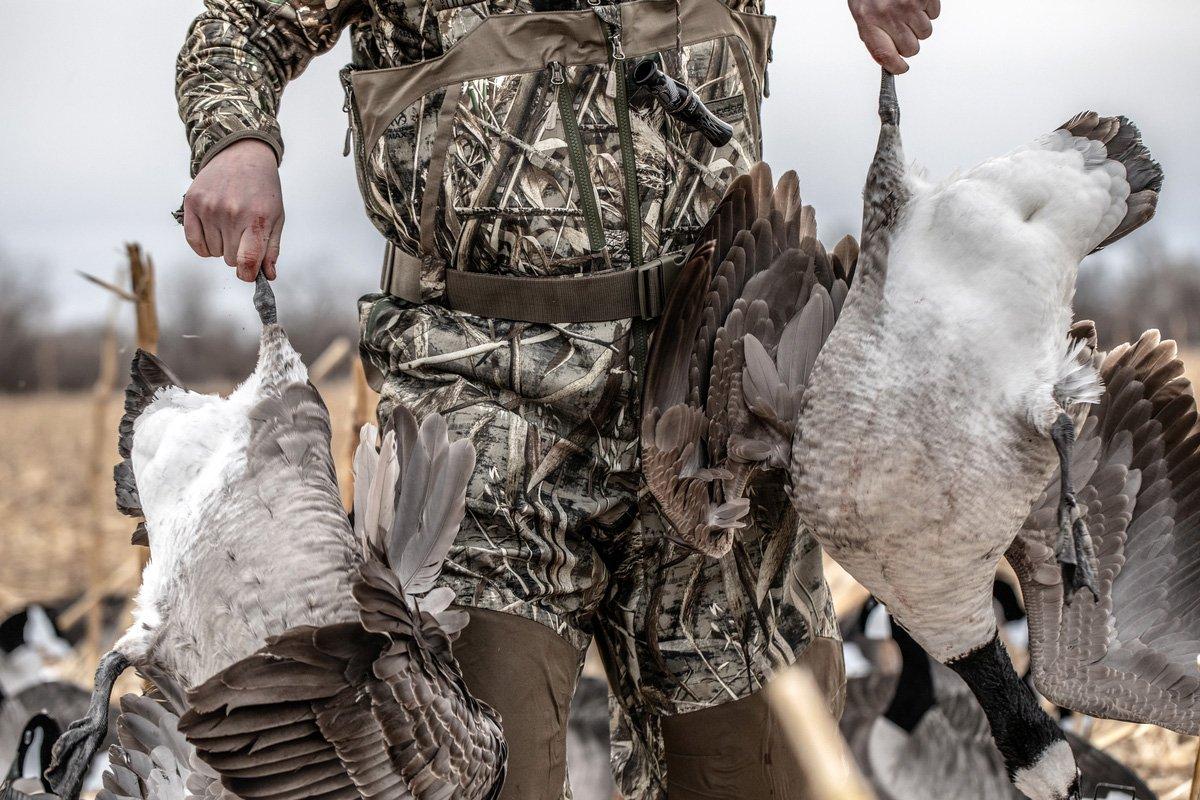Reflecting on honkers from last season that wouldn't play the game but ended on the dinner table anyway
Honkers can get under my skin any year, but this past season in particular, I encountered several flocks of geese that spiked my blood pressure and elicited creative vocabulary. But I managed to outmaneuver them in the end. Here's a look the types of problem geese I encountered and how I dealt with each.
The Surveyors
Some honkers seem to have an internal plat book, because they somehow know the location of municipal limits and property lines and always stick to the safe side of those boundaries. Killing them can be tough unless you convince them they should stop elsewhere for a visit.
In October, I located good numbers of geese in a cut cornfield near a highway. The owner of the field doesn't allow hunting, so setting up on the X wasn't an option. After watching the birds for several mornings, though, I had an idea.
The geese were roosting on a pond north of the field, and my friends and I had permission to hunt the farm between the roost and the hot feed. If we waited for a day with a stiff south wind, we could set up along the fence line between the properties and try to run traffic.
This plan worked better than we'd hoped. Instead of merely getting a few fly-bys, we had great in-your-face decoying action and limited quickly. The geese never returned to the out-of-bounds field, and I was OK with that.
The Short-Stoppers
Late-season geese can be buggers about finishing in the decoys, even if your concealment is good and your spread looks inviting. Sometimes, you need to pull a 180 on them.
During the season's final days, 150-plus geese were feeding daily in a snow-covered stubble field. A buddy and I enjoyed one good shoot there, but we struck out during subsequent hunts because birds coasted just out of range or short-stopped the spread to land in an adjacent field. One day, I'd had enough.
Let's set the spread like usual, but set up downwind to catch them coming in, I said.
My buddy agreed, and we even found good hides by the large tires of a massive pivot system. Sure enough, the honkers lifted off their roost on cue and began their steady approach to the field. And when several of them dropped altitude and coasted toward landing spots outside our decoys, they came right over our heads.
Falling geese can make quite a dent in snowdrifts. Just saying.
The Roost-Buster
Conventional etiquette holds that you shouldn't shoot a roost water. Doing so can be difficult, unless you slip in well before daylight to avoid flushing birds. But when the season is ticking down and that roost is the only water not covered in ice, the rules change.
I'd intended to hunt mallards on the half-frozen lake that morning, but several hundred departing geese surprised me. "No way they're coming back," I thought.
But as the morning progressed and the duck flight slowed, I noticed several batches of geese returning to the lake from nearby fields. Smaller lakes and ponds where the geese would typically loaf at midday were frozen so, just like me, the geese had fewer open-water options.
I hadn't brought any goose decoys, but I had a call and found a decent setup with good cover. And when a returning flock swooped low for a look, I added a grain-fed honker to the mallards in my skiff.
Click here for more Realtree waterfowl hunting content. And check us out on Facebook.







